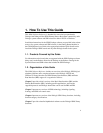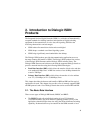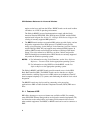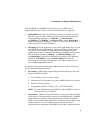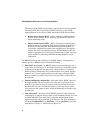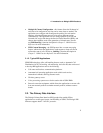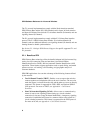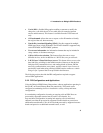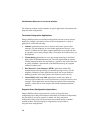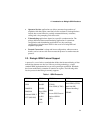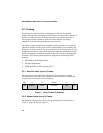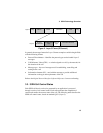ISDN Software Reference for Linux and Windows
8
The T-1 protocol implementations comply with the North American standard
ISDN Primary Rate and the INS-1500 standard used in Japan. In North America
and Japan, the Primary Rate includes 23 voice/data channels (B channels) and one
signaling channel (D channel).
The E-1 protocol implementations comply with the E-1 Primary Rate interface
protocol. The E-1 ISDN Primary Rate includes 30 voice/data channels (B
channels) and two additional channels: one signaling channel (D channel) and one
framing channel to handle synchronization.
See Section 2.3. Dialogic ISDN Protocol Support for specific supported T-1 and
E-1 protocols.
2.2.1. Benefits of PRI
ISDN Primary Rate technology offers the benefits inherent in digital connectivity,
such as fast call connection (setup and teardown), fast Dialed Number
Identification Service (DNIS), and fast Automatic Number Identification (ANI)
acquisition. These features support applications such as speed dialing, automated
operator services, call waiting, call forwarding, and geographic analysis of
customer databases.
ISDN PRI applications also can take advantage of the following features offered
by the network:
• Two B-Channel Transfer (TBCT). Enables a user to request the switch to
connect together two independent calls on the user’s interface. The user who
made the request is released from the calls and the other two users are directly
connected. This feature is supported for 5ESS, 4ESS, and National ISDN-2
(NI2) protocols. For more on TBCT, see Appendix A - Call Control
Scenarios.
• Non-Call Associated Signaling (NCAS). Allows users to communicate by
means of user-to-user signaling without setting up a circuit-switched
connection (it does not occupy B channel bandwidth). A temporary signaling
connection is established and cleared in a manner similar to the control of a
circuit-switched connection. This feature is supported for the 5ESS protocol.
For more on NCAS, see Appendix A - Call Control Scenarios.




